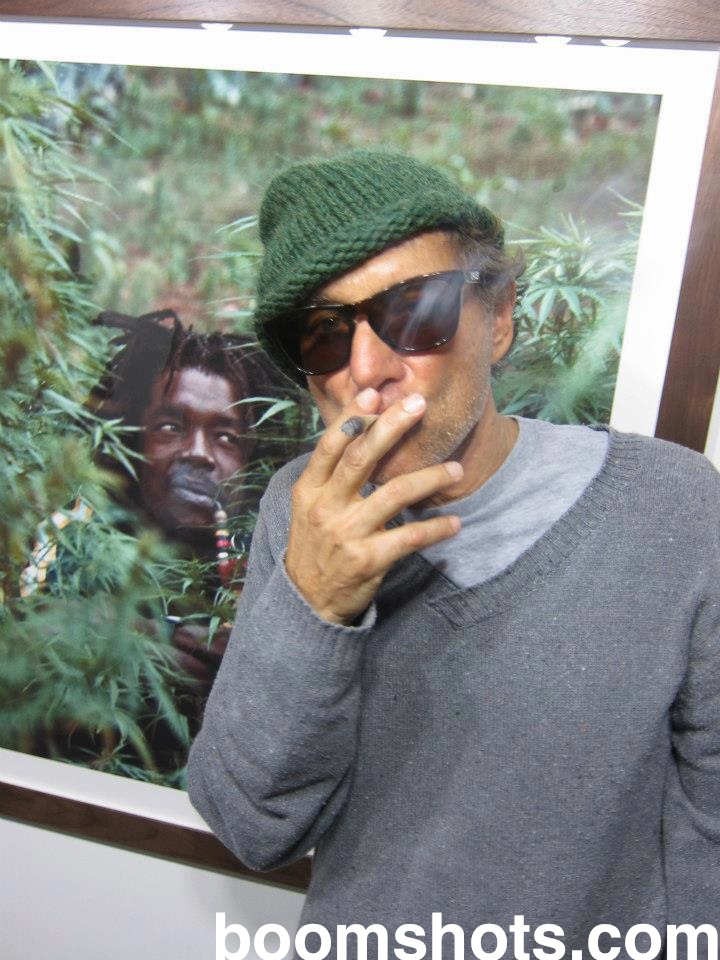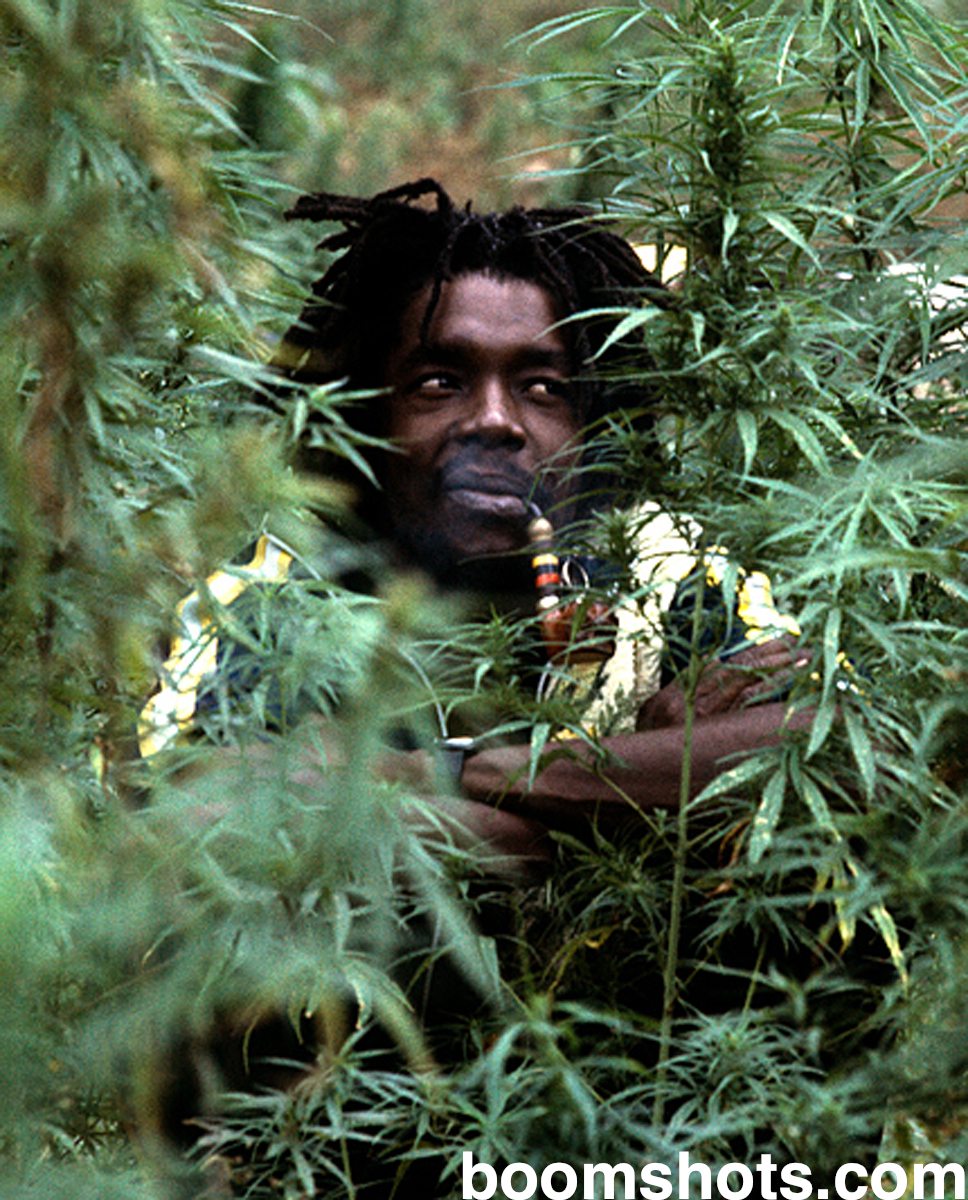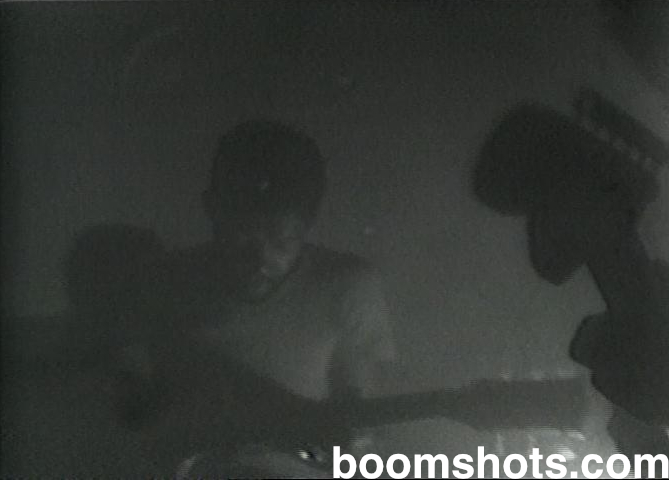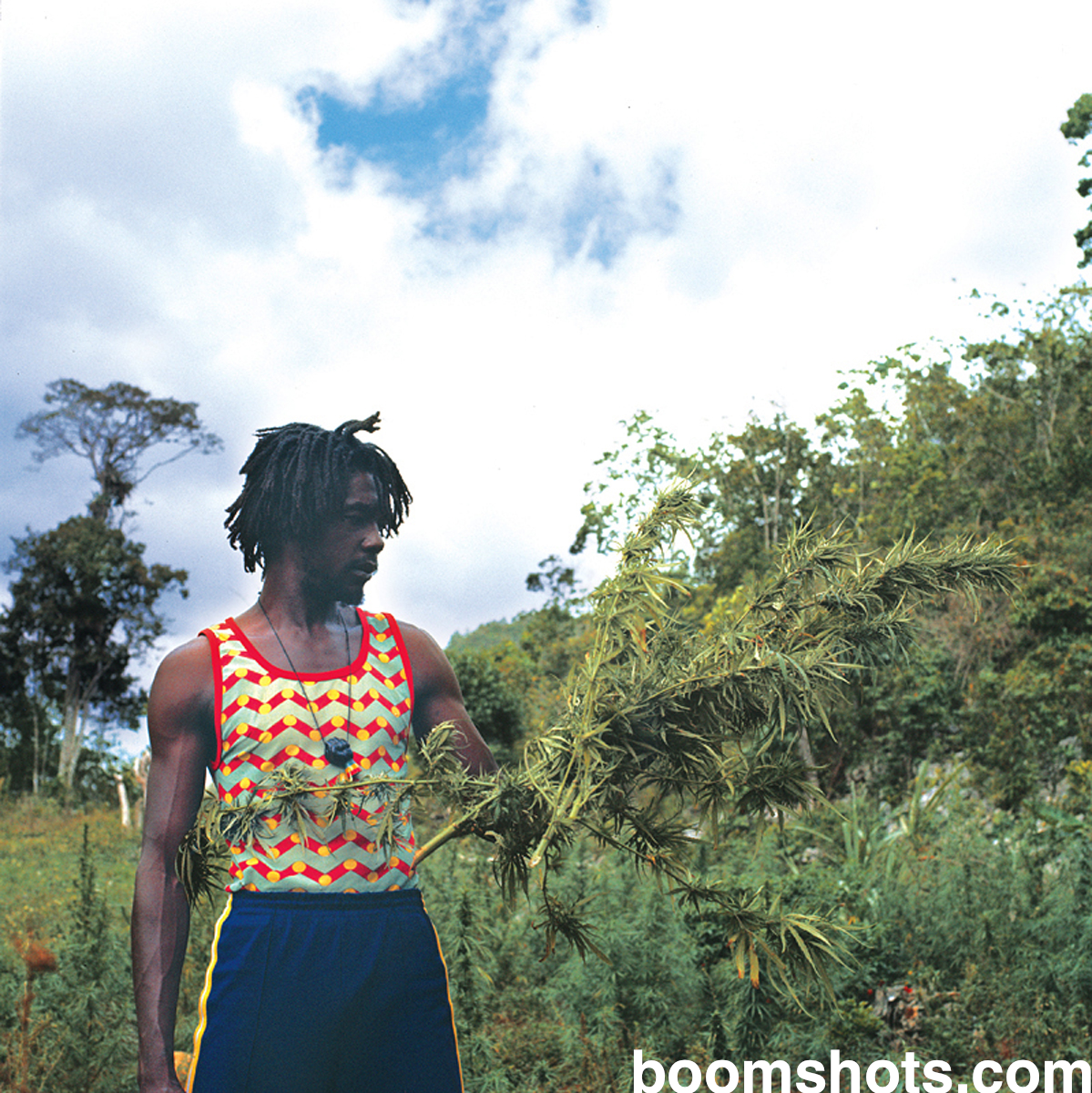“Legalize It,” An Exhibition Of Jaffe’s Tosh Photos, Is On View Now At Dem Passwords Gallery in L.A.

Lee Jaffe was born in the Bronx but always felt right at home in Jamaica. The man who played harmonica on Bob Marley’s “Three O’Clock Roadblock” was also a great photographer who shot the cover of Peter Tosh’s 1976 solo debut, Legalize It. Many of Jaffe’s images are collected in his indispensible photographic memoir One Love: Life With Bob Marley & The Wailers. But as Tosh’s lyrics said “Half the story has never been told.” Earlier this month an exhibition of remarkable photographs and video footage shot by Lee Jaffe opened at at Dem Passwords gallery in Los Angeles. The show captures images of the Bush Doctor during the Spring of 1976, just months before the release of Legalize It and 11 years before his assassination. Interview and photos after the jump.
“Peter, he had such a militant air about him. And at the same time you could be at his place and he’d roll you a spliff and say, “Here mon, a nice draw of herb.” He had this incredibly generous heart which became apparent once he accepted that you were on the side of the “sufferers” and you were a part of the struggle.
“Bob, Peter and Bunny at that time were so focused on the work and the necessity, the message in the music and the importance of it—how it could be impactful. It was 24/7. It didn’t really let up. Even the fun parts of it. And they could be really funny through difficult times—humor making difficult times sweeter. No matter how hard things were, you know, you were in Jamaica, you could find a good spliff and drink a coconut, so there was that part of it. Never taking that for granted.
“Peter was living in Spanish Town and we were all into recording the Legalize It album. The song had been recorded, we had done most of the overdubs, I think we had done just about everything except mixing and we were working on a deal with Columbia, but it was in the air and to me… in the U.S. at that time, nobody grew herb. It didn’t exist and nobody knew what it looked like. Herb was something that came in bricks or something like that. So the first time I saw an herb field was with Bob because I used to go to the country with him all the time. I used to love to go to this little village where he was born, Nine Mile it’s called. So one time we went there and it’s in the mountains and we took this hike and you go down in this valley and you go up the mountain and down another valley and up the mountain, like a half hour. We were on top of this valley and I look down and it’s glowing this iridescent green and it was this whole valley of herb. It was the first time I ever saw that. It was so mystical.
Peter Tosh “Legalize It” 1976
“Legalize It has so many meanings. First it’s about herb and herb is about everyday existence. And to have it illegal means you’re illegal all the time. It means you’re always outside the law if you’re a Raste. And the Rastas were at the vanguard of changing the culture, of changing the mentality of slavery, of deconstruting neocolonialism. And it’s why the music and lyrics are still resonating today. Because those problems still exist.
It’s not just about legalizing herb. Once the herb is criminalised then your whole existence is criminalised. Your whole way of life. IT’s a way of trying to kill your inspiration. It’s saying this incredibly potent medicine—you can’t use that. And that’s the weapon we use to fight the guns.”
—Interview courtesy of Ethan Higbee
“Legalize It” will be on view at Dem Passwords 7914-B Santa Monica Blvd. West Hollywood, CA until October 6. For a full selectino of shots from the opening of the exhibition, check out Dem Passwords Facebook fan page.




Leave a Reply